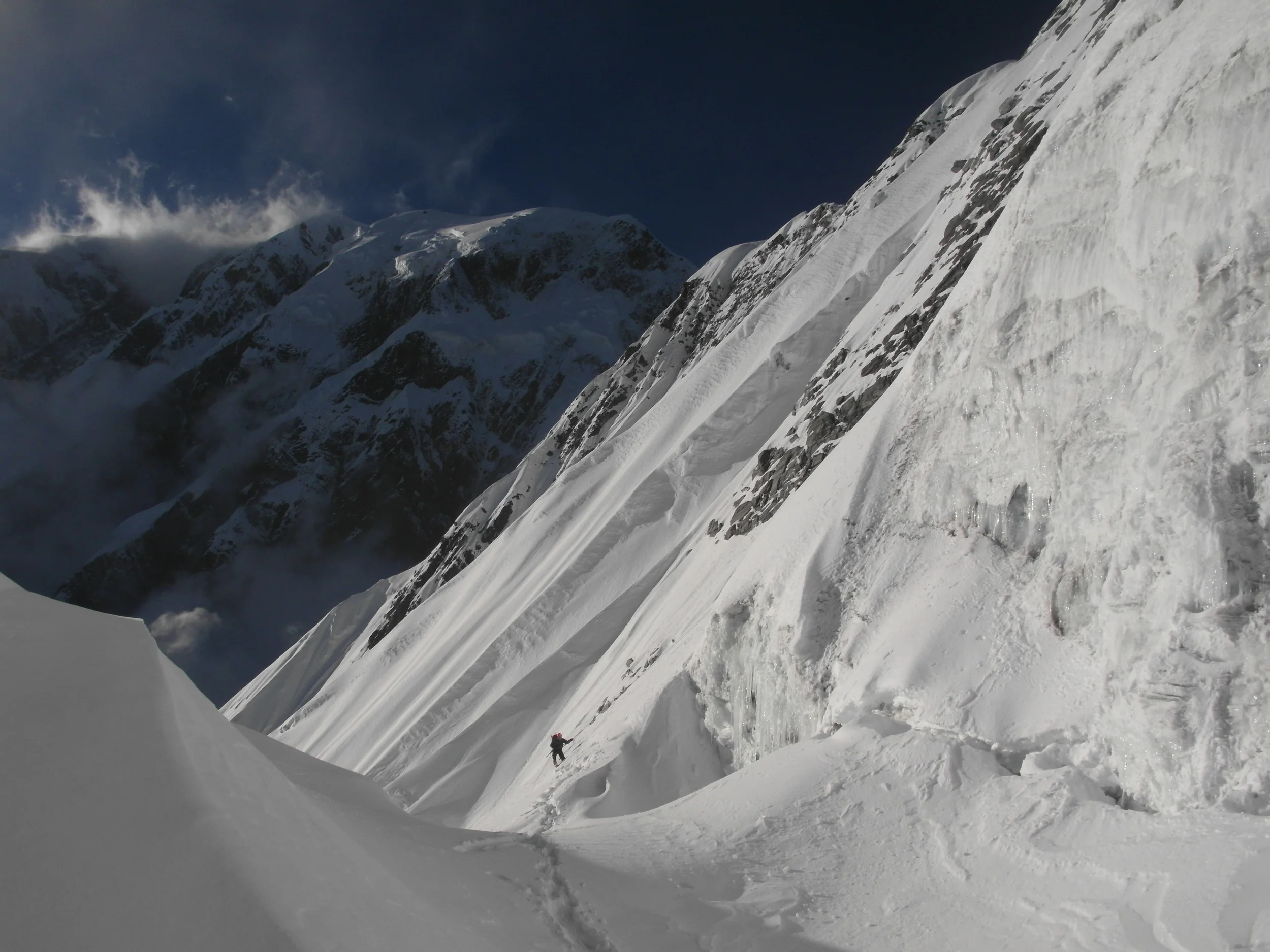Annapurna III, Se and E ridge attempt. 2010.
In April 2010 Matt and Nick Bullock attempted to walk in to the south side of A3 with a team of porters and cooks. Five days later without Pete Benson, the third member of the team who was stuck in Britain because of the volcanic ash cloud covering British air space at that time, they called a halt to proceedings. Porters were risking their lives in the conditions that prevailed.
Since returning from this first trip and talking via email with Rob Fairley, it appears that the initial landslip area had been washed away to reveal steep glaciated rock. There definitely would be a way across one of the small rubble strewn ledges but without bolts or via ferrata gear, (they had neither) it would be too dangerous for the porters. As it was, 14 of the remaining 20 porters had decided they would not be continuing anyway, leaving 6 porters to carry 23 loads for the next 3 days over what they knew to be dangerous and technical ground.
After walking out to the road head at Tati Pani, returning to Pokhara and finally Kathmandu, they decided the best and safest way, possibly the only way to travel into the south side of A3 would be by helicopter.
Post monsoon found all three of the team re-united and all of the gear in Kathmandu, including boots and tents which in the spring were still in Britain due the volcanic ash.
A helicopter flew the team, including cameraman David Reeves and journalist Ed Douglas from Kathmandu to Pokhara. After one night in Pokhara, everyone together with all the gear flew in several stages to BC.
The pilot had tried to fly into the BC area for a reccy several times before, but failed due to the complex approach and cloudy inclement weather. His first successful approach was actually while dropping the cook off in the general area of what we presume was an original BC from previous expeditions.
On this first successful flight, the helicopter had flown through the Seti Kola gorge, a very deep and inescapable fault and landed. For everyone this was quite a stressful time but especially for Pemba Sherpa, the pilot and Buddhi the cook who had to wait by himself until the second shuttle up the Seti Kola
A fly around confirmed the area was a massive jumble of towers and crumbling fins and that the original BC was a long way from the foot of the Southeast Ridge. Being in the fortunate position of having a helicopter, they decided BC should be situated high up the moraine at approximately 4600m near the foot of the East Ridge.
Once the whole team had been dropped at the newly agreed BC, Captain Pemba proceeded to shuttle the remaining gear from an intermediate drop zone, near the village of Tati Pani. This took a further 6 flights.
It only took a few days to realise that the Southeast Ridge was an incredibly dangerous objective for an Alpine style ascent. The initial snow slope/glacier runnel that, after talking to Nick Colton, they now presume is the same one that Nick and Tim Leach climbed in their 82 attempt, has a massive serac towering above which carves fairly frequently. Above this serac are a further two massive seracs. Even if the initial runnel was not seriously threatened there appeared to be several overhanging ice sections in the runnel with big holes.
To the right of the ridge is a rock band of smooth glaciated slabs and above this the snout of the rapidly receding glacier carves constantly, day and night without interruption. The rock on the ridge, exfoliating shale that rattled around the cirque as regular as the ice, gave them no-doubt that they would not be climbing it. Finally on the left of the ridge some ice lines that they thought might go, lead to nothing and melted out quickly.
Given the dangerous nature of the rock and ice on the Southeast Ridge it was an easy decision to look elsewhere with the East Ridge being the most obvious, if not the only choice available.
The East Ridge of A3 is massive. Once on the ridge itself, a traverse and technical face all above 6000 m in height has to be climbed. A distance of approximately 6 un-escapable kilometres from the start of the traversing until the summit would have to be negotiated. We reckoned about 5 to 10 days would see us stood on the summit and all the way in reverse !
Unfortunately after 4 sorties to the start of the ridge, at 6000m the weather was never settled enough to give the ridge a proper go. Wind was the biggest problem, blowing constantly for the whole expedition.







